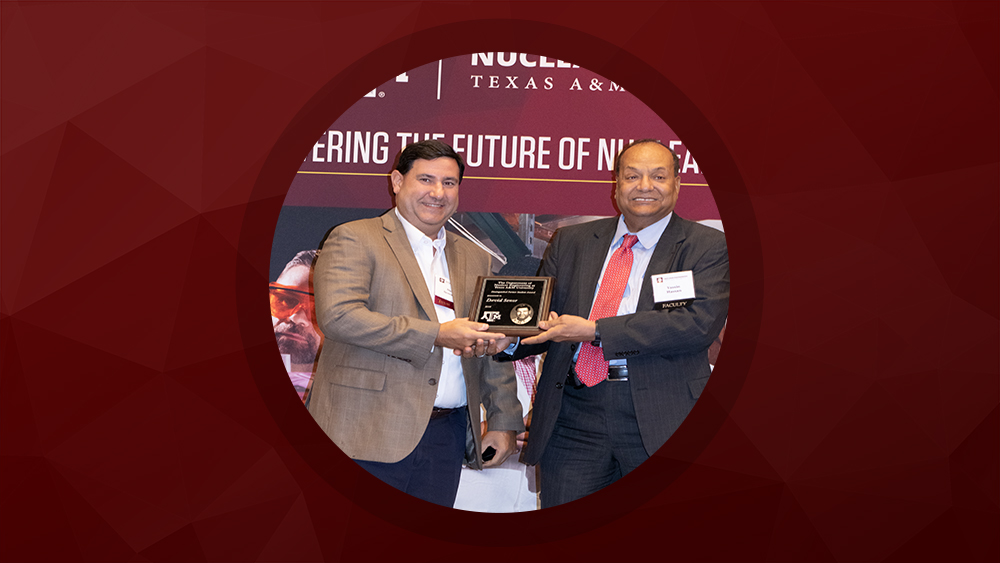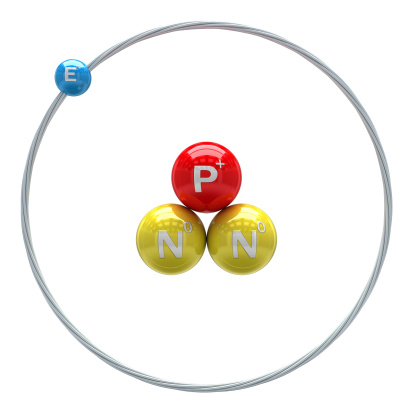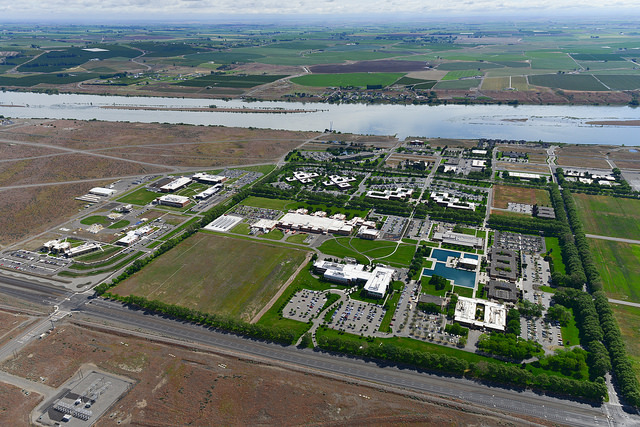
The 2018 Department of Nuclear Engineering Distinguished Former Student Award was presented to Dr. David Senor ‘88 ‘89 ‘92 for his technical accomplishments, service to his alma mater, research collaborations within the department, student mentoring and love for all things Aggie. Dr. Yassin Hassan, the nuclear engineering department head, presented Senor with the award during the department awards banquet on Oct. 4, 2018.
“Dave Senor was an outstanding student at Texas A&M University, both as an undergraduate and a graduate student,” said Dr. Kenneth Peddicord, a nuclear engineering professor and the director of the Nuclear Power Institute. “He was one of the first students to be awarded the four-year Department of Energy Fellowship leading to a Ph.D. Dr. Senor has gone on to make a major impact in his professional career and is leading important national security missions. He is a real credit to our department and to Texas A&M.”
Senor is the tritium technology program deputy manager for science and technology at the Pacific Northwest National Laboratory (PNNL) in Richland, Washington. His work focuses on irradiation behavior evaluation, physical, mechanical and thermal property measurement, and manufacturing development of conventional and advanced nuclear materials.
“It is easy to stay motivated in my career because the program’s mission is critical to us national security,” he said. “Knowing that your job supports a key component of U.S. national defense is very satisfying and

Senor is responsible for leading the research efforts associated with the U.S. production of tritium. One aspect of the job is interacting with universities to not only leverage existing research capabilities relevant to the tritium production mission but also introducing nuclear engineering students to the tritium program. This ensures the U.S. maintains a highly-capable technical workforce for the future.
2018 marks Senor’s seventh year of mentoring senior design teams in the nuclear engineering 406 and 410 classes. “I provide a tritium-related design challenge every fall and then mentor one to four design teams through the course of the academic year,” Senor said, adding that the tritium design challenge provides students with an opportunity to work on a topic that is of significant interest to the U.S. government. “The design challenges are typically related to hot topics in the program and the results provide us with a starting point for further investigation.”
Under his mentorship, the undergraduate teams have designed cores to produce tritium and reports that have influenced the research directions of the U.S. Department of Energy and other organizations. “Our students are immensely grateful for his technical guidance and motivation in these capstone design projects,” said Dr. Karen Kirkland, a nuclear engineering professor and associate department head.
This year PNNL is challenging Texas A&M students to develop conceptual designs for future advanced reactors for tritium production. Two teams are working together on a liquid metal reactor concept and another two teams are working on a molten salt reactor concept.
Victor Ibarra Jr. ’19 is working on simulating a molten salt reactor focused on tritium production. Ibarra has met Senor twice already for his senior capstone design project. He’s interested in pursuing tritium production in his career and is grateful for the opportunity to work with PNNL on a new type of project. “It will be excellent for interviews,” Ibarra said. “The project involves core modeling, thermal hydraulics and elements of nonproliferation.”
Senor also collaborates with Texas A&M faculty for various radiation materials science projects.

A Fightin’ Texas Aggie
Senor’s favorite tradition is Muster. “It is an absolutely unique tradition that links us to our history and also brings Aggies all around the world together for a common purpose on the same day,” he said. Senor is very involved in the Columbia Basin A&M Club and has served as Muster chair on numerous occasions. Although he has a busy travel schedule, Senor may be found in the Kyle Field stands during many home football games.
As a student, he worked in the Advanced Nuclear Fuels Laboratory under Peddicord. “Dave was a key person in the lab,” said Peddicord. “His work on the material property correlations of Niobium-1 percent Zirconium became a reference in the field for researchers. He went on to build upon this expertise in his career at PNNL.”
Outside of class, Senor played in the Jazz Band during his time at Texas A&M and was an active member in the American Nuclear Society and Alpha Nu Sigma. “There was an overall sense of strong support from our professors and a desire to do whatever they could to enable my success, both academically while I was at Texas A&M and also in the years since then,” he said. Senor fondly recalls football weekends, living on campus in Walton Hall and spending time with his future wife, Denise, class of ‘85.
Senor chose nuclear engineering at Texas A&M because nuclear science and technology seemed to offer almost unlimited potential for electricity production, space power and propulsion, medical advancements, and a host of other applications.
“Nuclear appeared to be the future, and I wanted to be a part of that,” he said. “I continue to think that the wide scale adoption of nuclear power is inevitable, particularly if there are technical or political reasons to limit the use of fossil fuels in the future. Beyond terrestrial electricity production, nuclear technology still offers enormous advantages for space power and propulsion and a variety of other applications such as desalination and remote baseload power.”
Senor advises nuclear engineering students to keep an open mind about career opportunities, emphasizing that the nuclear engineering degree is comprehensive and prepares one for a wide variety of possible careers, some of which are outside of “traditional” nuclear engineering opportunities.
Senor is a member of the American Nuclear Society, The Minerals, Metals and Materials Society and the U.S. Naval Institute. He currently serves on the Nuclear Science user Facilities Science Review Board. He has authored or co-authored over 190 journal articles, presentations, and technical reports in the open literature, holds two U.S. patents, and has organized five international workshops and symposia.
“I am very honored and humbled to receive the Distinguished Former Student Award from the nuclear engineering department at Texas A&M,” he said. “As anyone who has known me for more than 30 seconds knows, I am a proud Fightin’ Texas Aggie. To receive this recognition from my department at my university means more to me than I can adequately express.”